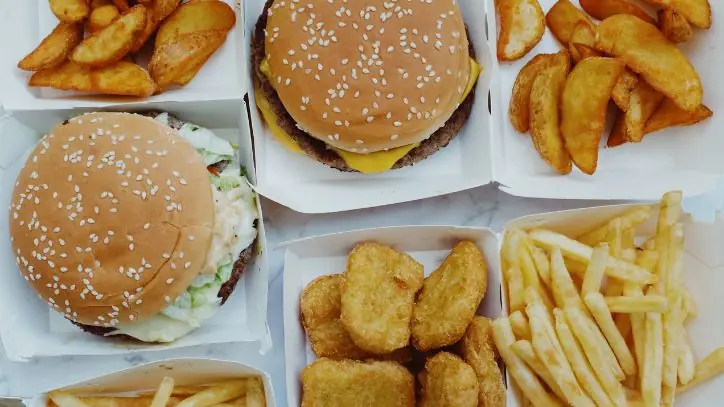Blog
Teen’s Exhibiting Poorer Eating and Exercise Habits

Recent research published in the CDC’s Morbidity and Mortality Weekly Report sheds light on a growing concern: teens are demonstrating poorer dietary habits and exercising less in recent years. This study examined the eating and exercise patterns of high school students between 2019 and 2021, revealing alarming trends that may have long-term implications for their health.
Trends in Teen Eating Habits
One significant finding of the research is the decrease in the consumption of fruits and vegetables among teenagers. According to the CDC, a balanced diet rich in fruits and vegetables is essential for overall health, particularly during the adolescent years when individuals experience significant physical and mental growth. Nutritionists often recommend that teens consume a variety of fruits and vegetables daily to ensure they are receiving the necessary vitamins and minerals for optimal development.
However, data suggests that many teens are not meeting these dietary recommendations. For further insights, the CDC offers statistics on the average daily intake of fruits and vegetables among U.S. teens. This drop in consumption can be attributed to various factors, including increased snacking on processed foods, the availability of fast food, and a general shift toward convenience over nutrition.
Physical Activity Decline
In addition to poor dietary habits, the same research indicates that participation rates in physical activities among teens have decreased. Regular exercise is critical for maintaining a healthy weight, improving cardiovascular health, and boosting mental well-being. The World Health Organization emphasizes that adolescents should engage in at least 60 minutes of moderate to vigorous physical activity each day.
Yet, many teens are falling short of this recommendation. Factors contributing to decreased physical activity levels include the rise of sedentary entertainment options, such as video games and streaming services, as well as academic pressures that can lead to a more sedentary lifestyle. The National Institute of Health provides guidelines and recommendations to encourage physical activity among teens, highlighting the importance of creating an environment that fosters movement and exercise.
Consequences of Poor Dietary Choices and Sedentary Lifestyle
The implications of poor eating and exercise habits during the teen years can be significant. Poor dietary choices and a lack of physical activity have been linked to numerous health issues, including obesity, diabetes, and mental health disorders. Adolescents who do not engage in regular physical activity may also experience decreased physical fitness, which can affect their self-esteem and overall well-being.
Research from Harvard Health highlights the connection between physical health and mental health, noting that teens who are physically active are less likely to experience anxiety and depression. This underscores the importance of encouraging healthy habits during these formative years.

Strategies to Encourage Healthy Habits in Teens
Understanding the importance of nutrition and exercise is only the first step. Here are several strategies to help encourage healthier habits among teens:
1. Enroll Them in Sports
Participating in sports can motivate teens to stay active while also providing them with valuable skills such as teamwork and discipline. Sports not only enhance physical fitness but also serve as a fun way to socialize with peers. Many schools offer various sports programs, and community organizations often provide additional opportunities for teens to engage in athletic activities.
2. Enroll Them in a P.E. Class
Ensuring that your teen is enrolled in a Physical Education (P.E.) class can help them build a foundation for lifelong fitness. P.E. classes promote not just physical activity but also educate students about health-related topics, such as nutrition and the importance of exercise. Participating in these classes can foster a lifelong appreciation for physical activity.
3. Promote Outdoor Activities
Encouraging outdoor activities is vital in countering the trend towards indoor, screen-based entertainment. Activities such as hiking, biking, or playing at local parks can get teenagers moving while allowing them to enjoy nature. Programs like Let’s Move provide resources and ideas for outdoor activities that families can do together, fostering a sense of community and adventure.
4. Pack Healthy Snacks for School
Promoting healthy eating habits starts at home. Packing nutritious snacks for school can help ensure that teens have access to healthy options throughout the day. Consider fruits, nuts, yogurt, or whole-grain items as alternatives to sugary snacks and processed foods. The Produce for Better Health Foundation offers a wealth of ideas for creative and nutritious snack choices.
5. Make and Prepare Healthy Foods at Home
Lead by example by preparing and enjoying healthy meals together as a family. Involving teens in the cooking process can empower them to make healthier food choices. Websites like ChooseMyPlate.gov provide easy recipes and tips for preparing balanced meals that are appealing to teenagers.
Addressing Barriers to Healthy Habits
To effectively encourage teens to adopt healthier lifestyles, it is essential to understand and address the barriers they may face. This includes:
- Time Constraints: Many teens have busy schedules filled with school, homework, and extracurricular activities. Finding quick, healthy meal options and integrating physical activity into their daily routines can help overcome these challenges.
- Peer Influence: Teens are often influenced by their peers. Creating a supportive environment where friends encourage each other to be active and make healthy food choices can lead to positive changes.
- Access to Resources: In some areas, access to fresh fruits and vegetables or safe spaces for physical activity may be limited. Advocating for community resources, such as farmers’ markets and recreational facilities, can help improve accessibility.
The Role of Schools and Communities
Schools play a crucial role in promoting healthy habits among teens. Implementing comprehensive wellness policies that include nutrition education, physical activity requirements, and access to healthy food in cafeterias can significantly impact students’ health outcomes. The Healthy, Hunger-Free Kids Act has made strides in improving school nutrition standards, but ongoing efforts are needed to ensure all students receive the nutrition they require.
Communities can also contribute to promoting healthier lifestyles for teens. Initiatives such as public health campaigns, after-school programs focused on physical fitness, and community gardens can create environments that support healthy choices. Resources like Action for Healthy Kids focus on bringing communities together to promote health and nutrition in schools.
Conclusion
The recent trends indicating that teens are adopting poorer eating and exercise habits are concerning, especially when considering the long-term health implications. During the adolescent years, it is crucial for teens to establish healthy patterns that will last a lifetime. By enrolling them in sports, ensuring they participate in P.E., promoting outdoor activities, packing healthy snacks, and preparing nutritious meals at home, parents and guardians can help foster a positive relationship with food and exercise.
Communities and schools play a vital role in creating environments that support healthy lifestyles. By working together to promote accessible, nutritious food and opportunities for physical activity, we can help combat the troubling trends observed in teen health. For more information and resources, consider visiting the Fill Your Plate blog for articles on healthy eating and exercise tailored for teens.
Taking proactive steps today can make a significant difference in the health and well-being of our teenagers as they transition into adulthood. Encouraging healthy habits not only benefits them now but lays the groundwork for a healthier future.
By Heide Kennedy, Arizona Farm Bureau Communications Intern

















